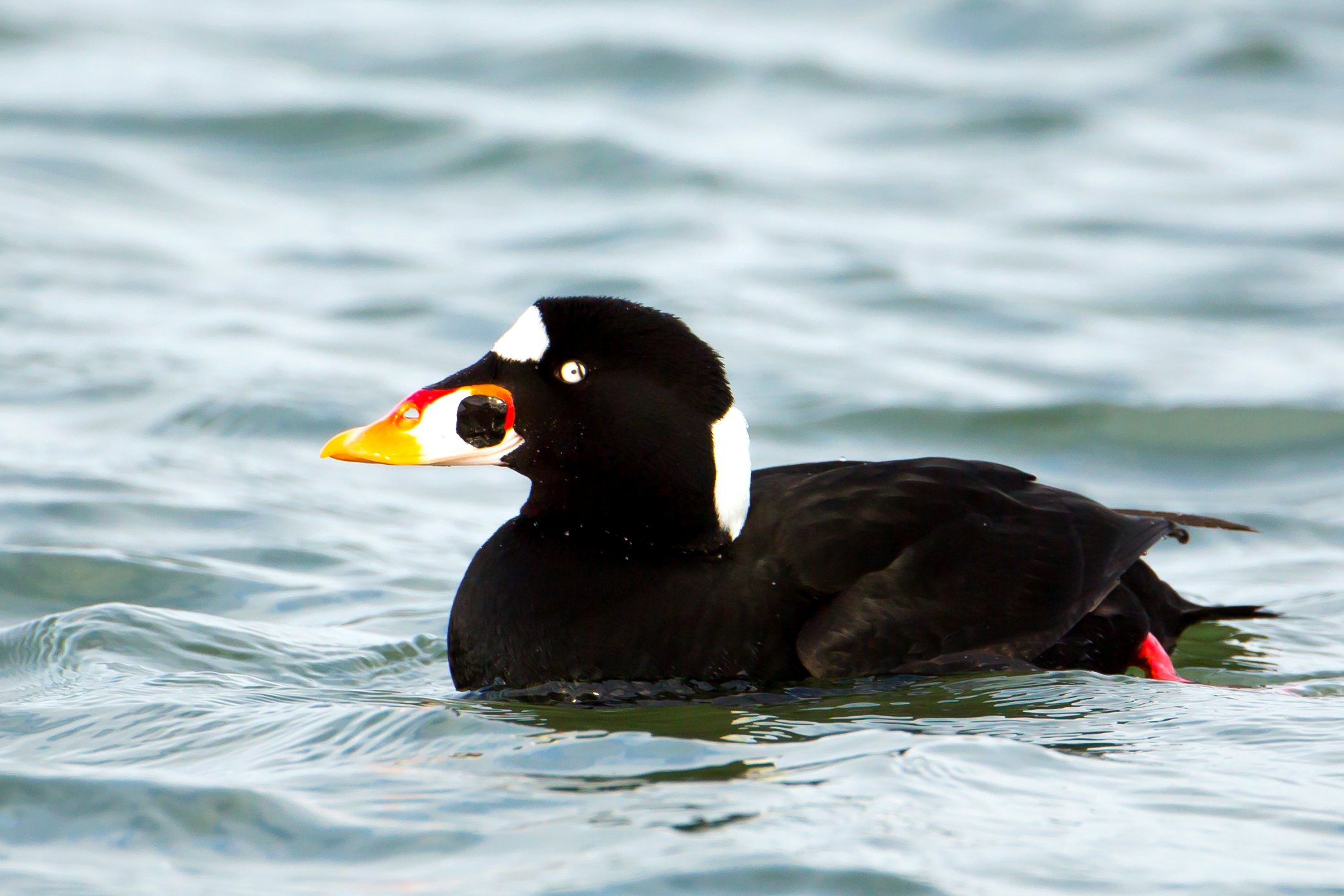Bird of the Month: Surf Scoter
By Hugh Jennings
PC: Mick Thompson (Surf Scoter)
Scientific Name: Melanitta perspicillat
Length 20 in
AOU Band code SUSC
The Surf Scoter (SUSC) is a 20” sea duck that swims in or just beyond breaking waves or ocean surf. Its genus Melanitta is Latin for black and its species perspicillata is from the Latin for conspicuous or spectacular. It is limited to North America, and winters on both coasts with some on the Great Lakes. In summer it nests in the arctic on tundra and sparsely wooded areas near water. The male is black with orangish legs and feet with a strong head pattern of orange bill, white eye, and white forehead patch. The female is brown with a dark crown and has two white patches on either side of the face; the forward patch meets the bill in a vertical line.
The scoter feeds primarily on shellfish as well as crustaceans, aquatic insects, small fish, marine worms and plant material. Foraging is by diving and then swimming underwater propelled by the feet with wings half-opened. Its well hidden nest is of weed material, located some distance from water in the sparsely forested arctic. The pale buff colored eggs number 5 to 8 and are incubated by the female. The young are precocial, i.e. begin feeding soon after hatching. There is usually only one brood a season.
Migration is in great flocks, usually flying high overland to coastal wintering areas: stopovers appear to be for rest rather than feeding. The numbers of this duck were in decline, but now appear to be numerous and stable. With scoters wintering in concentrations along the coasts, they are vulnerable to oil spills and other pollution.


